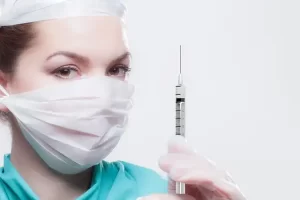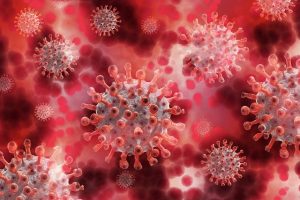Scientists finally cracked the mechanism of hallucinogens to treat mental illness!
- Mifepristone: A Safe and Effective Abortion Option Amidst Controversy
- Asbestos Detected in Buildings Damaged in Ukraine: Analyzed by Japanese Company
- New Ocrevus Subcutaneous Injection Therapy Shows Promising Results in Multiple Sclerosis Treatmen
- Dutch Man Infected with COVID-19 for 613 Days Dies: Accumulating Over 50 Virus Mutations
- Engineered Soybeans with Pig Protein: A Promising Alternative or Pandora’s Dish?
- Severe Fever with Thrombocytopenia Syndrome (SFTS): A Tick-Borne Threat with High Mortality
Scientists finally cracked the mechanism of hallucinogens to treat mental illness!
- Red Yeast Rice Scare Grips Japan: Over 114 Hospitalized and 5 Deaths
- Long COVID Brain Fog: Blood-Brain Barrier Damage and Persistent Inflammation
- FDA has mandated a top-level black box warning for all marketed CAR-T therapies
- Can people with high blood pressure eat peanuts?
- What is the difference between dopamine and dobutamine?
- How long can the patient live after heart stent surgery?
Scientists finally cracked the mechanism of hallucinogens to treat mental illness!
In recent years, although significant progress has been made in the research and development of drugs for depression and other mental diseases, many new problems have emerged.
For example, why are hallucinogens such as psilocybin effective in treating treatment-resistant depression [1], while some compounds that are also agonists of serotonin 2A receptors (5-HT2ARs) are ineffective, even raising 5 Selective serotonin reuptake inhibitors (SSRIs) have very limited effects on levels of -HT2ARs ligand serotonin (5-HT) [2].
On Feb. 17, the team of David E. Olson at the University of California, Davis , published a research paper [3] in the journal Science, which may be able to answer the above difficult problem, and may even subvert our understanding of serotonin and its receptor 5-HT2ARs awareness of interactions.
They found that the activation of 5-HT2ARs localized in nerve cells (especially the Golgi apparatus), rather than on the nerve cell membrane, is the key to the antidepressant effect of hallucinogens .
Since serotonin cannot cross cell membranes, they speculated that serotonin may not be a natural ligand for intracellular 5-HT2ARs at allimageimageimage

Screenshot of paper home page
At the end of last year, the results of a clinical study of psilocybin in the treatment of refractory depression topped the top medical journal “New England Journal of Medicine” [1].
The results of the study showed that psilocybin reached the maximum effect on the second day of treatment, and significantly improved the patient’s condition within 3 weeks .
This largest clinical study at the time laid the foundation for the application of psilocybin in the clinical treatment of depression and brought hope to patients with refractory depression.
In fact, many studies have confirmed that hallucinogens such as dimethyltryptamine (DMT) and psilocybin can improve the plasticity of nerve cells by activating 5-HT2ARs (so they are also called neuroplasticizers) , such as promoting the growth of new dendrites and the formation of dendritic spines [4].
The decreased density of dendritic spines in the cerebral cortex is precisely a sign of neuropsychiatric diseases such as depression [5].

Left: healthy nerves; middle: depressed nerves; right: nerves treated with neuroplasticizers[5]
As mentioned at the beginning of the article, scientists have noticed that some 5-HT2ARs agonists can promote neural plasticity, but there are also many agonists that do not promote neuroplasticity.
For example, some studies have found that 5-HT2ARs can’t [6] .
Moreover, this miraculous phenomenon cannot be explained by biased agitation [7], which means there are other reasons behind it.
Olson noticed that, compared with hallucinogens, serotonin is a hydrophilic polar compound, which is actually unable to pass through non-polar cell membranes by passive diffusion, that is to say, it cannot enter the interior of cells [8].
They speculated that the difference between different 5-HT2ARs agonists may be caused by the different positions of activated 5-HT2ARs. They also defined this underlying phenomenon as position bias.
In order to confirm this conjecture, Olson’s team first modified a series of compounds based on 5-hydroxytryptamine.
A distinctive feature of these compounds is the level of N-methylation. As shown in the figure below, some have no N-methylation, some have one, and some have two.
It was designed this way because N-methylation is known to increase the lipophilicity of compounds, that is, their ability to cross cell membranes.
Olson and his colleagues are encouraged by the findings. First, as the level of N-methylation increases, their ability to promote neuronal growth is enhanced , and N,N-dimethyl compounds have the strongest ability to increase the complexity of dendritic branching; secondly, if the knockout of 5- HT2AR, the ability of all compounds to promote nerve growth is lost .

Top: Schematic diagram of chemical modification; Bottom: Effect of promoting neuron growth
The above results obviously imply that the 5-HT2ARs in cells are playing a role .
However, it should be noted that 5-HT2ARs belong to G protein-coupled receptors (GPCRs), and GPCRs are considered to be mainly located on the plasma membrane of the cell, although some studies have also found that it can be located in a large number of cells, but in nerve cells , what is the real situation? This question is very critical.
Fortunately, based on techniques such as fluorescence microscopy, Olson’s team confirmed that 5-HT2ARs in cortical neurons are indeed mainly localized in the cells, especially on the Golgi apparatus.

Localization of 5-HT2ARs in different cells
In a follow-up study, the Olson team expressed the 5-hydroxytryptamine transporter on the cell membrane based on electroporation technology, and combined with the use of 5-hydroxytryptamine transporter inhibitors, confirmed that the ability to cross the cell membrane is necessary for hallucinogens to induce neuroplasticity condition.
In addition, they found that with the help of electroporation or serotonin transporter (SERT), serotonin can also promote nerve growth and antidepressant as effectively as the hallucinogen dimethyltryptamine (DMT) role.

Effects of transmembrane or not transmembrane on nerve growth
In general, the research results of the Olson team have deciphered the mechanism of hallucinogens to promote neurogrowth, and also imply that the natural receptor of 5-HT2ARs in cells is not 5-hydroxytryptamine, but the methylation of 5-hydroxytryptamine Homologues.
Olson believes that their research has given us a deeper understanding of how 5-HT2ARs regulate neural plasticity, which may help scientists design better drugs.

Schematic diagram of the mechanism of action
references:
[1]. Goodwin GM, Aaronson ST, Alvarez O, et al. Single-Dose Psilocybin for a Treatment-Resistant Episode of Major Depression. N Engl J Med. 2022;387(18):1637-1648. doi:10.1056/ NEJMoa2206443
[2].Hess EM, Gould TD. Possible psychedelic therapeutic mechanism. Science. 2023;379(6633):642-643. doi:10.1126/science.adg2989
[3].Vargas MV, Dunlap LE, Dong C, et al. Psychedelics promote neuroplasticity through the activation of intracellular 5-HT2A receptors. Science. 2023;379(6633):700-706. doi:10.1126/science.adf0435
[4].Vargas MV, Meyer R, Avanes AA, et al. Psychedelics and Other Psychoplastogens for Treating Mental Illness. Front Psychiatry. 2021;12:727117. Published 2021 Oct 4.
[5].Duman RS, Aghajanian GK, Sanacora G, et al. Synaptic plasticity and depression: new insights from stress and rapid-acting antidepressants. Nat Med. 2016;22(3):238-249. doi:10.1038/nm .4050
[6].Ly C, Greb AC, Cameron LP, et al. Psychedelics Promote Structural and Functional Neural Plasticity. Cell Rep. 2018;23(11):3170-3182. doi:10.1016/j.celrep.2018.05.022
[7].Kim K, Che T, Panova O, et al. Structure of a Hallucinogen-Activated Gq-Coupled 5-HT2A Serotonin Receptor. Cell. 2020;182(6):1574-1588.e19. doi:10.1016/ j.cell.2020.08.024
[8].Kwan AC, Olson DE, Preller KH, Roth BL. The neural basis of psychedelic action. Nat Neurosci. 2022;25(11):1407-1419. doi:10.1038/s41593-022-01177-4
[9]. https://www.ucdavis.edu/health/news/receptor-location-matters-psychedelic-drug-effects
Scientists finally cracked the mechanism of hallucinogens to treat mental illness!
(source:internet, reference only)
Disclaimer of medicaltrend.org
Important Note: The information provided is for informational purposes only and should not be considered as medical advice.



